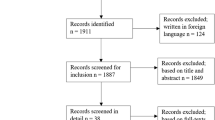Abstract
Combining television and a second, web-connected screen, is challenging both in technical and production content issues, as they can influence users’ engagement with the content. The case study presented in this paper aims to discuss how the use of different content recognition techniques for TV set and mobile devices synchronization can impact for better or worse the users’ interactive experience. From a triangulation method approach, using a prototype, quantitative and qualitative questionnaires and focus groups, user test sessions were carried out in order to collect perceptions and reactions from participants using variations of QRcode, hashtag and audio watermark markers when second screening. Data analysis showed that a key factor for a fruitful content recognition for dual screening is not only the seamless communication by itself, but the influence level of each specific characteristics of a marker, such as size of images, number of characters and noises.









Similar content being viewed by others
References
Angeluci ACB (2013) From ‘Gads’ to ‘Apps’: the key challenges of post-web internet era. Revista Geminis 1(2 Ano 4):75–88
Arnold M (2000) Audio watermarking: features, applications, and algorithms. IEEE Int Conf Multimedia Expo (II) 1013–1016
Bestbuy TV buying guide. Available at http://www.bestbuy.com/
Boney L, Tewfik AH, Hamdy KN (1996) Digital watermarks for audio signals. In: Multimedia Computing and Systems, 1996, Proceedings of the Third IEEE International Conference on. IEEE 473–480
Brown A et al (2014) HCI over multiple screens. In: CHI’14 Extended Abstracts on Human Factors in Computing Systems. ACM 665–674
Bruns A (2008) Blogs, Wikipedia, second life, and beyond: from production to produsage. Peter Lang
Caldas CHS, De Oliveira BJ, Neto ON (2015) Dos regimes aos gradientes de interação no consumo televisivo: superstar, um reality show nascido para ser interativo. Verso Reverso 29(70):24–34
Calixto GM et al (2014) Effectiveness analysis of audio watermark tags for IPTV second screen applications and synchronization. In: Telecommunications Symposium (ITS), 2014 International. IEEE 1–5
Cameron J, Geidner N (2014) Something old, something new, something borrowed from something blue: Experiments on dual viewing TV and Twitter. J Broadcast Electron Media 58(3)
Das D et al (2011) An interactive system using digital broadcasting and quick response code. In: Consumer Electronics (ISCE), 2011 I.E. 15th International Symposium on. IEEE 397–400
Doughty M, Rowland D, Lawson S (2011) Co-viewing live TV with digital backchannel streams. In: Proceedings of the 9th international interactive conference on Interactive television. ACM 141–144
Doughty M, Rowland D, Lawson S (2012) Who is on your sofa?: TV audience communities and second screening social networks. In: Proceedings of the 10th European conference on Interactive TV and video. ACM 79–86
Duong NQK, Howson C, Legallais Y (2012) Fast second screen TV synchronization combining audio fingerprint technique and generalized cross correlation. In: Consumer Electronics-Berlin (ICCE-Berlin), 2012 I.E. International Conference on. IEEE 241–244
Galindo RF, Fernández BE, Alameda GD (2014) Análisis del uso e interacción con aplicaciones second screen en TV Social en España. Cuadernos Inf (35)159–175
Giglietto F, Selva D (2014) Second screen and participation: a content analysis on a full season dataset of tweets. J Commun 64(2):260–277
Hirsch E, Silverstone R (Ed.) (2003) Consuming technologies: media and information in domestic spaces. Routledge
Holmes ME, Josephson S, Carney RE (2012) Visual attention to television programs with a second-screen application. Proceedings of the Symposium on Eye Tracking Research and Applications. ACM 397–400
How to choose the right screen size. Available at http://www.amazon.com//
Howson C et al (2011) Second screen TV synchronization. In: Consumer Electronics-Berlin (ICCE-Berlin), 2011 I.E. International Conference on. IEEE 361–365
Jenkins H (2009) Confronting the challenges of participatory culture: media education for the 21st century. Mit Press
Katz E, Blumler JG (1999) GUREVITCH, Michael. Utilization of mass communication by the individual. Sources notable selections in mass media, p. 51–59
Lemma A et al (2008) Watermarking for content aware intelligent toys. In: 2008 Second International Conference on Electrical Engineering
Lexicon: Second Screen Society. Available at http://www.2ndscreensociety.com/lexicon/
The right distance to sit from your TV. Available at http://www.lg.com//
Wohn DY, Eun-Kyung NA (2011) Tweeting about TV: sharing television viewing experiences via social media message streams. First Monday (16)3
Ziegler C (2013) Second screen for HbbTV—automatic application launch and app-to-app communication enabling novel TV programme related second-screen scenarios. In: Consumer Electronics Berlin (ICCE-Berlin), 2013. ICCEBerlin 2013. IEEE Third International Conference on. IEEE 1–5
Author information
Authors and Affiliations
Corresponding author
Rights and permissions
About this article
Cite this article
Angeluci, A.C.B., Calixto, G.M., Bevilaqua, L.M. et al. QRcode, hashtag or audio watermark? A case study on second screening. Multimed Tools Appl 76, 7519–7534 (2017). https://doi.org/10.1007/s11042-016-3417-z
Received:
Revised:
Accepted:
Published:
Issue Date:
DOI: https://doi.org/10.1007/s11042-016-3417-z




